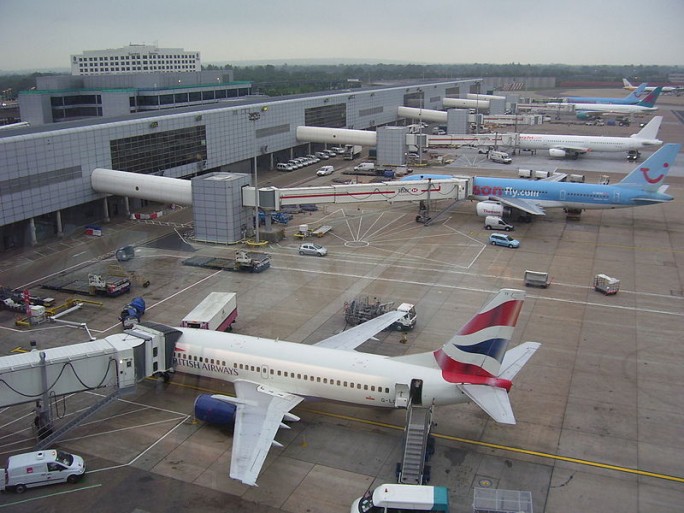Drone Shutdown Of Gatwick Airport Ends As Runway Reopens

Chaos at UK’s second busiest airport eases as Gatwick reopens runaway after prolific drone disruption
Gatwick airport has reopened its runaway on Friday morning after a complete shutdown was triggered by drones flying over the runway.
The re-opening of the runaway will allow for the Christmas getaway for 100,000 weary passengers, but the airport has warned that it was very likely to be knock-on delays and cancellations of flights.
Gatwick took the unprecedented decision on Wednesday evening to close its single runway after drones were seen flying over Gatwick airport on Wednesday evening and Thursday morning.
Army assistance
Police were engaged in a game of cat and mouth with the unidentified drone operators, as very time attempts were made to re-open the runaway, the drones appeared once again.
The complete shutdown of Gatwick airport during the busy Christmas period had political implications with the Prime Minister Theresa May saying she feels for Gatwick passengers and said that the activity was illegal and those caught could face five years in prison.
In the UK it is illegal to fly a drone in the vicinity (1 kilometre) of an airport, as well as fly drones “beyond the direct unaided line of sight”.
Flights near crowds of people and near buildings are also prohibited.
Read More: Can you fly drones in London?
The tense stand-off with the rogue drone operator has ended however after Gatwick airport drafted in military personnel and technology.
Military technologies have been deployed by the British army to safeguard Gatwick as it reopens for flights after 36 hours of drone disruption, transport minister Chris Grayling reportedly said on Friday.
“What’s happening on the ground is a mix of measures taken to give confidence that aircraft can be safe… Some of those are military capabilities,” Grayling told BBC television.
“The reality is that this technology is only just emerging… there certainly isn’t a straightforward commercial, off-the-shelf solution that automatically solves all problems.”
Meanwhile the airport also announced it was now open for business.
“Gatwick’s runway is now available and aircraft are arriving and departing,” said the airport. “We are, however, expecting knock-on delays and cancellations to flights. If you are due to travel from Gatwick today, we strongly recommend that you check the status of your flight with your airline before departing for the airport.”
Drone danger
Drone do pose a danger to aircraft, especially during takeoff and landings.
In 2016 for example, a ‘drone‘ collided with an BA A320 passenger jet that was on final approach to London’s Heathrow Airport.
This has prompted aerospace manufacturer Airbus to partner with an anti-drone company to design technology that ‘protects’ lower airspaces from small, consumer UAVs.
Indeed, for a while now the uptake of drone technology has led to headaches for authorities.
This has led to the development of some unorthodox approaches.
Dutch police for example have trained eagles to take out airborne vehicles that could pose a threat to public safety.
![]()
Meanwhile the Japanese police have created a dedicated drone squad. That drone squad is equipped with a specialised drone that uses a net to disable the target drone.
The US government meanwhile is known to be working on technologies for protecting the public and sensitive areas from rogue drones, although little is known about its takedown methods.
That said, it has been reported recently that the US Secret Service has a rifle that when fired at a drone, forces it to go into automatic landing mode.
Previously, pop star Enrqiue Inglesias suffered injuries to his hand after trying to grab a drone which was being used to capture images of the crowd in order to get a personal view of his fans.
And research by the University of Birmingham has previously highlighted the privacy, safety and indeed security risks of drones over the next 20 years, especially as the unmanned aircraft could be possibly used by terror groups to attack public events.
What do you know about transport technology? Try our quiz!